
Cover photo may show optional equipment
not supplied with standard unit.
© Copyright 2007 Printed
Read the Operator’s manual entirely. When
you see this symbol, the subsequent
instructions andwarnings are serious - follow
without exception. Your life and the lives of
others depend on it!
!
Table of Contents
RBT1560, RBT1572 & RBT1584
Rear Blades
301-144M
Operator’s Manual
2/01/07
12017

RBT1560, RBT1572 & RBT1584 Rear Blades 301-144M
2/01/07
Land Pride
Table of Contents
© Copyright 2007 All rights Reserved
Land Pride provides this publication “as is” without warrantyof any kind, eitherexpressedor implied.While every precautionhas beentaken in the preparation ofthis manual, Land
Pride assumesnoresponsibilityfor errorsoromissions.Neitheris anyliabilityassumed fordamagesresultingfromthe use oftheinformation containedherein. Land Pride reserves
the rightto reviseandimprove itsproductsas it seesfit.This publicationdescribes thestateof this productatthe time ofitspublication,andmay notreflect the productinthefuture.
Land Pride is aregistered trademark.
All other brands and product names are trademarks or registered trademarks oftheir respective holders.
Printed in the United States of America.
Important Safety Information . . . . . . . . . . .1
Safety at All Times . . . . . . . . . . . . . . . . . . . . . . . . . 1
Look For The Safety Alert Symbol . . . . . . . . . . . . .1
Safety Labels . . . . . . . . . . . . . . . . . . . . . . . . . . . . . 4
Introduction . . . . . . . . . . . . . . . . . . . . . . . .5
Application . . . . . . . . . . . . . . . . . . . . . . . . . . . . . . . 5
Using This Manual . . . . . . . . . . . . . . . . . . . . . . . . . 5
Terminology . . . . . . . . . . . . . . . . . . . . . . . . . . . 5
Definitions . . . . . . . . . . . . . . . . . . . . . . . . . . . . . 5
Owner Assistance . . . . . . . . . . . . . . . . . . . . . . . . . 5
Serial Number Plate . . . . . . . . . . . . . . . . . . . . .5
Further Assistance . . . . . . . . . . . . . . . . . . . . . . 6
Section 1: Assembly & Set-up . . . . . . . . .7
RBT15 Rear Blades . . . . . . . . . . . . . . . . . . . . . . . . 7
3-Point Hook-Up . . . . . . . . . . . . . . . . . . . . . . . . . . 7
Section 2: Adjustments . . . . . . . . . . . . . . .8
Angling and reversing . . . . . . . . . . . . . . . . . . . . . .8
Pitch . . . . . . . . . . . . . . . . . . . . . . . . . . . . . . . . . . . 8
Blade Tilt . . . . . . . . . . . . . . . . . . . . . . . . . . . . . . . . 8
Blade Offset . . . . . . . . . . . . . . . . . . . . . . . . . . . . . . 8
Section 3: Operating Procedures . . . . . . .9
Operating Check List . . . . . . . . . . . . . . . . . . . . . . . 9
Transporting . . . . . . . . . . . . . . . . . . . . . . . . . . . . . 9
General Operating Instructions . . . . . . . . . . . . . . .9
Section 4: Maintenance & Lubrication . .10
Maintenance . . . . . . . . . . . . . . . . . . . . . . . . . . . .10
Lubrication Points . . . . . . . . . . . . . . . . . . . . . . . .10
Moldboard and Blade . . . . . . . . . . . . . . . . . . .10
Pivot Shaft . . . . . . . . . . . . . . . . . . . . . . . . . . . .10
Section 5: Options . . . . . . . . . . . . . . . . . .11
Skid Shoes . . . . . . . . . . . . . . . . . . . . . . . . . . . . . .11
Side Plates . . . . . . . . . . . . . . . . . . . . . . . . . . . . . .11
Rake Attachment . . . . . . . . . . . . . . . . . . . . . . . . .11
Storage Stand . . . . . . . . . . . . . . . . . . . . . . . . . . .11
Section 6: Specifications & Capacities .12
RBT15 Series . . . . . . . . . . . . . . . . . . . . . . . . . . . .12
RBT15 Series Rear Blades . . . . . . . . . . . . . . . . .13
Section 7: Features and Benefits . . . . . .13
Section 8: Appendix . . . . . . . . . . . . . . . .14
Torque Values Chart . . . . . . . . . . . . . . . . . . . . . .14
Warranty . . . . . . . . . . . . . . . . . . . . . . . . . . . . . . .15
Table of Contents

1
Important Safety Information
2/01/07
RBT1560, RBT1572 & RBT1584 Rear Blades 301-144M
Land Pride
Table of Contents
Important Safety Information
▲
These are common practices that may or may not be applicable to the products described in
this manual.
Safety at All Times
Thoroughly read and understand
the instructions given in this
manual before operation. Refer to
the “Safety Label” section, read
all instructions noted on them.
Do not allow anyone to operate
this equipment who has not fully
read and comprehended this
manual and who has not been
properly trained in the safe
operation of the equipment.
▲ Operator should be familiar with
all functions of the unit.
▲ Operate implement from the
driver’s seat only.
▲ Do not leave tractor or implement
unattended with engine running.
▲ Dismounting from a moving
tractor could cause serious injury
or death.
▲ Do not stand between the tractor
and implement during hitching.
▲ Keep hands, feet, and clothing
away from power-driven parts.
▲ Wear snug fitting clothing to avoid
entanglement with moving parts.
▲ Watch out for wires, trees, etc.,
when raising implement. Make
sure all persons are clear of
working area.
▲ Turning tractor too tight may
cause implement to ride up on
wheels. This could result in injury
or equipment damage.
!
Look For The Safety Alert Symbol
The SAFETY ALERT SYMBOL indicates there is a
potential hazard to personal safety involved and extra
safety precaution must be taken. When you see this
symbol, be alert and carefully read the message that
follows it. In addition to design and configuration of
equipment, hazard control and accident prevention
are dependent upon the awareness, concern,
prudence and proper training of personnel involved in
the operation, transport, maintenance and storage of
equipment.
Be Aware of
Signal Words
A Signal word designates a degree or
level of hazard seriousness. The
signal words are:
Indicates an imminently hazardous
situation which, if not avoided, will
result in death or serious injury. This
signal word is limited to the most
extreme situations, typically for
machine components that, for
functional purposes, cannot be
guarded.
!
DANGER
Indicates a potentially hazardous
situation which, if not avoided, could
result in death or serious injury, and
includes hazards that are exposed
when guards areremoved. It may also
be used to alert against unsafe
practices.
Indicates a potentially hazardous
situation which, if not avoided, may
result in minor or moderate injury. It
may also be used to alert against
unsafe practices.
!
WARNING
!
CAUTION
For Your Protection
▲ Thoroughly read and understand
the “Safety Label” section, read all
instructions noted on them.
Shutdown and Storage
▲ Lower machine to ground, put
tractor in park, turn off engine, and
remove the key.
▲ Detach and store implements in a
area where children normally do
not play. Secure implement by
using blocks and supports.
OFF
REMO
VE

2
Important Safety Information
RBT1560, RBT1572 & RBT1584 Rear Blades 301-144M
2/01/07
Land Pride
Table of Contents
Transport
Machinery Safely
▲ Comply with state and local laws.
▲ Maximum transport speed for
implement is 20 mph. DO NOT
EXCEED. Never travel at a speed
which does not allow adequate
control of steering and stopping.
Some rough terrains require a
slower speed.
▲ Sudden breaking can cause a
towed load to swerve and upset.
Reduce speed if towed load is not
equipped with breaks.
▲ Use the following maximum
speed - tow load weight ratios as
a guideline:
▲ 20 mph when weight is less than
or equal to the weight of tractor.
▲ 10 mph when weight is double
the weight of tractor.
▲ IMPORTANT: Do not tow a load
that is more than double the
weight of tractor.
Use Safety
Lights and Devices
▲ Slow moving tractors, self-
propelled equipment, and towed
implements can create a hazard
when drivenonpublicroads.They
are difficult to see, especially at
night.
▲ Flashing warning lights and turn
signals are recommended
whenever driving on public roads.
Use lights and devices provided
with implement.
Practice Safe Maintenance
▲ Understand procedure before
doing work. Use proper tools and
equipment, refer to Operator’s
Manual for additional information.
▲ Work in a clean dry area.
▲ Lower the implement to the
ground, put tractor in park, turn off
engine, and remove key before
performing maintenance.
▲ Allow implement to cool
completely.
▲ Do not grease or oil implement
while it is in operation.
▲ Inspect all parts. Make sure parts
are in good condition & installed
properly.
▲ Remove buildup of grease, oil or
debris.
▲ Remove all tools and unused
parts from implement before
operation.
Use A Safety Chain
▲ A safety chain will help control
drawn machinery should it
separate from the tractor
drawbar.
▲ Use a chain with the strength
rating equal to or greater than
the gross weight of the towed
machinery.
▲ Attach the chain to the tractor
drawbar support or other
specified anchor location. Allow
only enough slackin the chain to
permit turning.
▲ Do not use safety chain for
towing.
These are common practices that may or may not be applicable to the products described in
this manual.

3
Important Safety Information
2/01/07
RBT1560, RBT1572 & RBT1584 Rear Blades 301-144M
Land Pride
Table of Contents
Prepare for Emergencies
▲ Be prepared if a fire starts.
▲ Keep a first aid kit and fire
extinguisher handy.
▲ Keep emergency numbers for
doctor, ambulance, hospital and
fire department near phone.
911
Wear
Protective Equipment
▲ Protectiveclothing and equipment
should be worn.
▲ Wear clothing and equipment
appropriate for the job. Avoid
loose fitting clothing.
▲ Prolonged exposure to loud noise
can cause hearing impairment or
hearing loss. Wear suitable
hearing protection such as
earmuffs or earplugs.
▲ Operating equipment safely
requires the full attention of the
operator. Avoid wearing radio
headphones while operating
machinery.
Avoid High
Pressure Fluids Hazard
▲ Escaping fluid underpressurecan
penetratetheskincausingserious
injury.
▲ Avoid the hazard by relieving
pressure before disconnecting
hydraulic lines.
▲ Use a piece of paper or
cardboard, NOT BODY PARTS, to
check for suspected leaks.
▲ Wear protective gloves and safety
glasses or goggles when working
with hydraulic systems.
▲ If an accident occurs, see a
doctor immediately. Any fluid
injected into the skin must be
surgically removed within a few
hours or gangrene may result.
These are common practices that may or may not be applicable to the products described in
this manual.
Keep Riders
Off Machinery
▲ Riders obstruct the operator’s
view, they could be struck by
foreign objects or thrown from the
machine.
▲ Never allow children to operate
equipment.

4
Important Safety Information
RBT1560, RBT1572 & RBT1584 Rear Blades 301-144M
2/01/07
Land Pride
Table of Contents
818-202C
Caution: Retaining Nut
Safety Labels
Your rear blade comes equipped with all safety labels in place.
They were designed to help you safely operate your implement.
Read and follow their directions.
1. Keep all safety labels clean and legible.
2. Replace all damaged or missing labels. To order new
labels go to your nearest Land Pride dealer.
3. Some new equipment installed during repair requires
safety labels to be affixed to the replaced component as
specified by Land Pride. When ordering new components
make sure the correct safety labels are included in the
request.
12045
4. Refer to this section for proper label placement.
To install new labels:
a. Clean the area the label is to be placed.
b. Spray soapy water on the surface where the label is to
be placed.
c. Peel backing from label. Press firmly onto the surface.
d. Squeeze out air bubbles with the edge of a credit card.

5
Introduction
2/01/07
RBT1560, RBT1572 & RBT1584 Rear Blades 301-144M
Land Pride
Table of Contents
Terminology
“Right” or “Left” as used in this manual is determined by
facing the directionthe machinewill operate while in use
unless otherwise stated.
Definitions
Owner Assistance
The Warranty Registration card should be filled out by
the dealer at the time of purchase. This information is
necessary to provide you with quality customer service.
If customer service or repairparts are required contact a
LandPridedealer. Adealerhas trainedpersonnel,repair
parts and equipment needed to service the rear blade.
The parts on your rear blade have been specially
designedandshouldonlybereplacedwithgenuineLand
Pride parts. Therefore, should your rear blade require
replacement parts go to your Land Pride Dealer.
Serial Number Plate
For prompt service always use the serial number and
modelnumber when ordering partsfrom your Land Pride
dealer.Besuretoincludeyourserialandmodel numbers
incorrespondence also.Referto Figure1 forthe location
of your serial number plate.
Serial Number Plate Location
Figure 1
NOTE: A special point of information that the
operator must be aware of before continuing.
IMPORTANT: A special point of information related
to its preceding topic. Land Pride’s intention is that
this information should be read and noted before
continuing.
14964
Introduction
Land Pride welcomes you to the growing family of new
product owners.
This rear blade hasbeen designedwith careand builtby
skilledworkersusingqualitymaterials.Properassembly,
maintenance and safe operating practices will help you
get years of satisfactory use from the machine.
Application
The Land Pride RBT15 Series 3-Way Position Blades
are designed for Category I three-point hitch mounting
and are adapted for attachment to tractors in the 17 to
40 hp range. They come in 60", 72", and 84" working
widths and are compatible with the Land Pride Quick
Hitch. An optional support stand is available for those
blades not equipped with the stand to accommodate
easier blade removal, storage, and remount capabilities.
TheseBlades offer 7 forward and 5reverseangles and 5
tilt positions. The 14" tall rolled moldboard blade with its
reversiblecuttingedge can be offset twelve inchesto the
left or right to cover either tractor tire and to allow
operators to work right up next to retaining walls,
abutments and raised curbing. Skid shoes are available
as an accessory to help in maintaining positive depth
control around obstacles such as manhole covers and
expansion joints. The moldboard can even be removed
to accommodate installation of an optional landscape
rake attachment.
When you consider all of the performance features and
capabilities of the RBT15 Series Blades by Land Pride it
is easy to understand why they are an excellent choice
for leveling, finish grading, and backfilling applications at
feedlots, outdoor arenas, building sites, nurseries, and
maintenance operations on farms, ranches, or home
owner lanes or roadways. They are excellent for snow
removal in the pulling or the push-blade mode. Their
offset and tilt capability make them and excellent choice
for construction and maintenance of drainage ditches,
waterways, and soil contours. They are also very
effective in maintaining silage pit operations.
See“Section6: Specifications& Capacities”on page 12
and “Section 7: Features and Benefits” on page 13 for
additional information and performance enhancing
options.
Using This Manual
•
This Operator’s Manual is designed to help familiarize
you with safety, assembly, operation, adjustments,
troubleshooting, and maintenance. Read this manual
and follow the recommendations to help ensure safe
and efficient operation.
• The information contained within this manual was
current at the timeof printing.Some partsmay change
slightly to assure you of the best performance.
• To order a new Operator’s or Parts Manual contact
your authorized dealer. Manuals can also be
downloaded, free-of-charge from our website at
www.landpride.com or printed from the Land Pride
Service & Support Center by your dealer.

6
Introduction
RBT1560, RBT1572 & RBT1584 Rear Blades 301-144M
2/01/07
Land Pride
Table of Contents
Further Assistance
Your dealer wants you to be satisfied with your new rear
blade.Ifforany reasonyoudo notunderstandany partof
thismanual or are not satisfiedwiththe service received,
the following actions are suggested:
1. Discuss the matter with your dealership service
manager making sure he is aware of any problems
youmay have and that hehas hadthe opportunity to
assist you.
2. If you are still not satisfied, seek out the owner or
general manager of the dealership, explain the
problem and request assistance.
3. For further assistance write to:
Land Pride Service Department
1525 East North Street
P.O. Box 5060
Salina, Ks. 67402-5060
E-mail address
lpser[email protected]

7
Section 1: Assembly & Set-up
2/01/07
RBT1560, RBT1572 & RBT1584 Rear Blades 301-144M
Land Pride
Table of Contents
RBT15 Rear Blades
Refer to Figure 1-1:
1. Insert the blade assembly (#1) through the hole on
the main frame assembly (#2).
2. Place the pivot cap (#3) over the threaded shaft
protruding through the opening on the main frame
assembly (#2).
3. Thread on slotted hex nut (#4) until the vertical play
is removed from pivot.
4. Insert the cotter pin (#5).
5. Line up holes in the mainframe assembly and blade
assembly and insert lock pin (#6).
6. Positionupperhitchmast(#7)onthemainframe(#2)
and insert bolts (#8). Retain with lock washers (#9)
and hex nuts (#10). Tighten to proper torque.
!
CAUTION
Always check to be sure that the slotted hex nut and cotter pin
are in place to retain the blade before reversing the blade. If
they are missing, the blade will fall off the frame while being
rotated!
RBT15 3-Way Rear Blade Assembly
Figure 1-1
12015
7. Install support leg (#11) into support stand bracket
and secure with 3/8" x 1 3/4" lg. roll pin (#12).
8. Securethewirepin(#13)inthetopholewhenstoring
theblade.Raisethelegallthe wayupandsecurethe
wire pin in the bottom hole when the blade is
attached to a tractor.
3-Point Hook-Up
Refer to Figure 1-2
!
DANGER
Tractor hook-up can be hazardous to your health or that of
your helper. Do not allow anyone to stand between the rear
blade and the tractor during hook-up operations. Do not
operate the hydraulic 3-point lift controls while someone is
directly behind the tractor.
1. Slowly back the tractor up to the rear blade and use
the tractor’s 3-point hydraulic control to adjust the
lowerlink arms up or down to match the height of the
rear blade hitch pins.
!
DANGER
Engage parking brake, shut off tractor and remove key before
dismounting from the tractor.
2. Slidethelowerlinkarms hitchlinkholesontotherear
blade hitch pins.
3. Install a linch pin or other fastener (supplied by
customer)through the hitchpin hole tolockthe lower
links into position.
4. Connect the top link to the upper pivot hitch using a
clevis pin supplied by the customer.
Tractor 3-Point Hitch
Figure 1-2
13809
Section 1: Assembly & Set-up

8
Section 2: Adjustments
RBT1560, RBT1572 & RBT1584 Rear Blades 301-144M
2/01/07
Land Pride
Table of Contents
Angling and reversing
Refer to Figure 2-1:
Eight holes are provided for angling the blade in either
the forward or reverse position. The blade canbe angled
horizontally 45 degrees to each side of center in 15
degree increments.
Blade Angling
Figure 2-1
Pitch
The pitch of the blade can be adjusted by lengthening or
shortening the top link of the tractor.
12051
Blade Tilt
Refer to Figure 2-2:
Five holes are provided for tilting the blade to either the
left or right positions. To tilt the blade pull the hair pin
cotter and pin on the mainframe and rotate the blade.
Reinsert pins.
Blade Tilt
Figure 2-2
Blade Offset
Refer to Figure 2-3:
The blade may be offset 12” right or left by unbolting the
moldboard from the blade mount weldment and then
rebolting it, using alternative holes provided on the
moldboard.
Blade Offset
Figure 2-3
12046
14965
Section 2: Adjustments

9
Section 3: Operating Procedures
2/01/07
RBT1560, RBT1572 & RBT1584 Rear Blades 301-144M
Land Pride
Table of Contents
Section 3: Operating Procedures
Operating Check List
Hazard control and accident prevention are dependent
upon the awareness, concern, prudence and proper
training involved in the operation, transport,
maintenance and storage of the blade. Therefore, It is
absolutely essential that no one operates the rear blade
without first having read, fully understood and become
totallyfamiliarwiththeOperator’sManual.Makesurethe
operator has paid particular attention to:
• Important Safety Information, pages 1 to 4
• Section 1: Assembly & Set-up, page 7
• Section 2: Adjustments, page 8
• Section 3: Operating Procedures, page 9
• Section 4: Maintenance & Lubrication, page 10
Beforebeginningto operateyourrear bladethefollowing
inspection should be performed
Transporting
!
CAUTION
When traveling on public roads at night or during the day, use
accessory lights and devices for adequate warning to operators
of other vehicles. Comply with all federal, state and local laws.
5. Whentraveling onroadways,transportin such a way
that faster moving vehicles may pass you safely.
6. When turning, leave enough clearance so the blade
does not contact obstacles such as buildings, trees
or fences.
7. Slow down when traveling over rough or hilly terrain.
General Operating Instructions
The RBT15 Series Rear Blades design and built by Land
Pride are ideal for snow removal as well as dirt leveling,
finish grading, and backfilling applications at feedlots,
outdoor arenas, building sites, and maintenance
operations on farm and ranch lanes or roadways. They
are also excellent for soil contouring and construction
and maintenance of ditches and waterways.
Once you have familiarized yourself with the Operator’s
Manual, completed the operations checklist, and
properly attached your Land Pride Rear Blade to your
tractor, you are almost ready to begin work. Hopefully
you have checked out your work site for anyburied utility
Operating Checklist
✔ Check Reference
Check 3-point Hook-up procedure. Be sure all
pins have been installed and are secured.
Page 7
All blade adjustments have been made and pins
have been installed and are secured.
page 8
The operator has read and understood how to
operate the blade.
Page 9
The rear blade has been lubricated as needed.
Page 10
Check the cutter initially and periodically for loose
bolts & pins, See Torque Values Chart.
Page 14
cables,pipelines,sprinklerheads,orotherobstaclesthat
you wouldn’t want to damage or encounter. Grade
stakes should now be in place if you intend to develop a
specificgrade, elevation, soilcontour, orroadbed crown.
An RBT15 Series Rear Blade’s primary purpose is for
grading or leveling of soil, gravel, or aggregate in the
warmer months or snow removal in the colder months.
These functions are best done at an approximate 2 to
4 mph ground speed. Becoming proficient with a rear
blade takes practice. Tractor horsepower, your personal
skilllevel,soiloraggregatecomposition,moisturelevels,
and compaction factors will all have a definite impact on
howeasily and effectively you getthe job done when you
are in the dirt working mode. Develop a plan to achieve
your expected results. Set the blade up at the proper
angle or angles to do the job. This may require some
experimentation to achieve the desired results. Lower
the box scraper to the ground and proceed forward at a
speed of no more than 2 to 4 mph. The blade should
immediately begin shaving the soil surface and dirt or
aggregate material. Set the tractors draft-link height
controlin the desired position. Withthe blade setata 90
degree angle youmay need to raise the blade slightly so
that the dirt or gravel can flow outevenly under the blade
effectivelyshaving offhigh spotsand fillingin potholesor
depressions. Skid shoes on the 15 Series Blades can
help maintain a consistent blade height for this purpose.
If you have the blade set at a horizontal angle, the
shaved or accumulated material will begin to move
outward toward the trailing edge of the blade. The
greater the angle the more quickly the shaved material
will be distributed off tothe side. If itis necessary towork
upnexttoabuilding foundation,abutment,orraised curb
you my want to offset the blade so that the outside edge
of the blade is beyond the outeredge ofthe tractortire in
working position. Back-filling operations may be more
easily performed by reversing the blade and operating
the tractor in reverseor commonly calledthe pushmode.
If you are performing the construction of soil contours or
waterwaysyouwillprobablyneedtosetatiltangleonthe
blade to achieve the desired effect. If you are grading or
cuttinga newditchbankorformingaroad crown,youwill
probably want to offset the blade in combination with
setting an appropriate tilt angle. This again will likely
require some experimentation to gain desired results. If
you are performing landscaping operations for the
purpose of seedbed preparation, you may want to
remove the moldboard and install an optional landscape
rake component to achieve a truly professional finish
whenyouarefinishedblading.Snowremovaltechniques
withabladewill beverysimilar todirtworking techniques
and will require a little experimentation to become
proficient.
With a little practice you should become a very good
operator and consistently achieve the desired results
you expect with your Land Pride RBT15 Series Rear
Blade. See the “Features and Benefits” section or the
“Product Specifications” for additional information and
performance enhancing options.

10
Section 4: Maintenance & Lubrication
RBT1560, RBT1572 & RBT1584 Rear Blades 301-144M
2/01/07
Land Pride
Table of Contents
Maintenance
Properservicingand adjustmentisthe keytothe longlife
of any implement. With careful and systematic
inspection, you can avoid costly maintenance, time and
repair.
After using your rear blade for several hours, check all
bolts to be sure they are tight.
Replace any worn, damaged or illegible safety labels by
obtaining new labels from your Land Pride Dealer.
Section 4: Maintenance & Lubrication
Lubrication Points
50
Multi-purpose
spray lube
Multi-purpose
grease lube
Intervals in hours
at which lubrication
is required
Lubrication
Legend
12017
Multi-purpose
oil lube
12040
Seasonally
Moldboard and Blade
Greasemoldboard and bladewhen storing foran extended
period of time.
Type of Lubrication: Multi-Purpose
Quantity = Coat Generously
Pivot Shaft
Coat pivot shaft with grease seasonally or when binding
occurs.
Type of Lubrication: Multi-Purpose
Quantity = Coat Generously
Seasonally

11
Section 5: Options
2/01/07
RBT1560, RBT1572 & RBT1584 Rear Blades 301-144M
Land Pride
Table of Contents
Section 5: Options
12042
12169
Skid Shoes
The skid shoes (7’ shown)are attached to both ends of the
blade to help prevent damage to the surface of the ground
by the blade. Refer to the skid shoe manual for assembly
instructions and operations.
Kit Bundles
301-012A RBT1560 & RBT1584 Skid Shoes
301-138A RBT1572 Skid Shoes
Side Plates
The side plates are attached to each end of the blade to
eliminate spillage when moving snow or loose material.
Kit Bundle
301-010A RBT1560, RBT1572 & RB1584 Side Plates
23674
Rake Attachment
The rakes are attached to the center pivot and are for
raking rocks, dirt and sand; and are perfect for cleaning
and preparing a site for seeding as swell as general
maintenance around farms, parks and beaches.
Kit Bundles
301-170A 60" Rake Attachment
301-171A 72" Rake Attachment
301-172A 84" Rake Attachment
301-173A 96" Rake Attachment
Storage Stand
The storage stand is attached to the main frame and
makes hooking-up and unhooking easier.Also, it supports
the main frame off the ground when storing to help protect
the finish. The stand is standard on some models
Kit Bundle
300-195A 15 Series Storage Stand
23675

12
Section 6: Specifications & Capacities
RBT1560, RBT1572 & RBT1584 Rear Blades 301-144M
2/01/07
Land Pride
Table of Contents
Section 6: Specifications & Capacities
RBT15 Series
RBT1560 RBT1572 RBT1584
Blade Width 60” 72” 84”
Approximate Weight (lbs.) 283 297 319
Horsepower Rating 17-40
Hitch Type Cat. 1
Angle/Position 5 Forward up to 30 degrees right or left
7 Reverse up to 45 degrees right or left
Blade Height 14”
Blade Thickness 1/4”
Cutting Edge 1/2” x 6”
Reversible
Double bevel
Offset 12”
Tilt 5 Positions up to 30 degrees right or left
Options Skid Shoes and Side Plates

13
Section 7: Features and Benefits
2/01/07
RBT1560, RBT1572 & RBT1584 Rear Blades 301-144M
Land Pride
Table of Contents
RBT15 Series Rear Blades
Features Benefits
Working widths 60”, 72”, 84”
HP rating 17-40 HP
7 Forward and 5 Reverse
angles
Many angles for diverse jobs and results.
Offset 12” Left or Right Manually move moldboard to cover either tractor tire.
5 Optional tilt positions Tilt moldboard easily to dig.
14” High rolled moldboard Rolled moldboard allows material to flow easily, which means less drag, less HP.
Moldboard thickness is just right for 40 HP work.
Reversible cutting edge For twice the life.
Skid shoes (optional) Set depth of blade to clear obstructions like manhole covers, street cracks.
Landscape Rake adaptable Remove moldboard and add rake element to add diversity of frame.
Storage Stand Store unit with front of hitch off the ground, allows for easier hook-up.
Side plates (optional) Side plates allow blade to hold in material to move.
Warranty One year parts & labor.
Quick-Hitch Fits Land Pride Quick-Hitch.
Section 7: Features and Benefits

14
Section 8: Appendix
RBT1560, RBT1572 & RBT1584 Rear Blades 301-144M
2/01/07
Land Pride
Table of Contents
Section 8: Appendix
Torque Values Chart
in-tpi
1
N · m
2
ft-lb
3
N · m ft-lb N · m ft-lb mm x pitch
4
N · m ft-lb N · m ft-lb N · m ft-lb
1/4" - 20 7.4 5.6 11 8 16 12 M 5 X 0.8 4 3 6 5 9 7
1/4" - 28 8.5 6 13 10 18 14 M 6 X 1 7 5 11 8 15 11
1vp-1 - 18 15 11 24 17 33 25 M 8 X 1.25 17 12 26 19 36 27
5/16" - 24 17 13 26 19 37 27 M 8 X 1 18 13 28 21 39 29
3/8" - 16 27 20 42 31 59 44 M10 X 1.5 33 24 52 39 72 53
3/8" - 24 31 22 47 35 67 49 M10 X 0.75 39 29 61 45 85 62
7/16" - 14 43 32 67 49 95 70 M12 X 1.75 58 42 91 67 125 93
7/16" - 20 49 36 75 55 105 78 M12 X 1.5 60 44 95 70 130 97
1/2" - 13 66 49 105 76 145 105 M12 X 1 90 66 105 77 145 105
1/2" - 20 75 55 115 85 165 120 M14 X 2 92 68 145 105 200 150
9/16" - 12 95 70 150 110 210 155 M14 X 1.5 99 73 155 115 l215 160
9/16" - 18 105 79 165 120 235 170 M16 X 2 145 105 225 165 315 230
5/8" - 11 130 97 205 150 285 210 M16 X 1.5 155 115 240 180 335 245
5/8" - 18 150 110 230 170 325 240 M18 X 2.5 195 145 310 230 405 300
3/4" - 10 235 170 360 265 510 375 M18 X 1.5 220 165 350 260 485 355
3/4" - 16 260 190 405 295 570 420 M20 X 2.5 280 205 440 325 610 450
7/8" - 9 225 165 585 430 820 605 M20 X 1.5 310 230 650 480 900 665
7/8" - 14 250 185 640 475 905 670 M24 X 3 480 355 760 560 1050 780
1" - 8 340 250 875 645 1230 910 M24 X 2 525 390 830 610 1150 845
1" - 12 370 275 955 705 1350 995 M30 X 3.5 960 705 1510 1120 2100 1550
1-1/8" - 7 480 355 1080 795 1750 1290 M30 X 2 1060 785 1680 1240 2320 1710
1 1/8" - 12 540 395 1210 890 1960 1440 M36 X 3.5 1730 1270 2650 1950 3660 2700
1 1/4" - 7 680 500 1520 1120 2460 1820 M36 X 2 1880 1380 2960 2190 4100 3220
1 1/4" - 12 750 555 1680 1240 2730 2010
1 3/8" - 6 890 655 1990 1470 3230 2380
1
in-tpi = nominal thread diameter in inches-threads per inch
1 3/8" - 12 1010 745 2270 1670 3680 2710
2
N· m = newton-meters
1 1/2" - 6 1180 870 2640 1950 4290 3160
3
ft-lb= foot pounds
1 1/2" - 12 1330 980 2970 2190 4820 3560
4
mm x pitch = nominal thread diameter in millimeters x thread pitch
Torque tolerance + 0%, -15% of torquing values. Unless otherwise specified use torque values listed above.
Grade 2 Grade 5
Grade 8
Bolt Head Identification
Bolt Size
(Inches)
5.8 8.8 10.9
Class 5.8 Class 8.8 Class 10.9
Bolt Head Identification
Bolt Size
(Metric)

15
Section 8: Appendix
2/01/07
RBT1560, RBT1572 & RBT1584 Rear Blades 301-144M
Land Pride
Table of Contents
Warranty
Land Pride warrants to the original purchaser that this Land Pride product will
be free from defects in material and workmanship beginning on the date of
purchase by the end user according to the following schedule when used as
intended and under normal service and conditions for personal use.
Overall Unit: One year Parts and Labor
Cutting Edges: Considered wear items.
This Warranty is limited to the replacement of any defective part by Land
Pride and the installation by the dealer of any such replacement part, and does
not cover common wear items such as blades, belts, tines, etc. Land Pride
reserves the right to inspect any equipment or parts which are claimed to have
been defective in material or workmanship.
This Warranty does not apply to any part or product which in Land Pride’s
judgment shall have been misused or damaged by accident or lack of normal
maintenance or care, or which has been repaired or altered in a way which
adversely affects its performance or reliability, or which has been used for a
purpose for which the product is not designed. Misuse also specifically includes
failure to properly maintain oil levels, grease points, and driveline shafts.
Claims under this Warranty must be made to the dealer which originally sold
the product and all warranty adjustments must be made through such dealer.
Land Pride reserves the right to make changes in materials or design of the
product at any time without notice.
This Warranty shall not be interpreted to render Land Pride liable for damages
of any kind, direct, consequential, or contingent to property. Furthermore, Land
Pride shall not be liable for damages resulting from any cause beyond its
reasonable control. This Warranty does not extend to lossof crops, any expense
or loss for labor, supplies, rental machinery or for any other reason.
No other warranty of any kind whatsoever, express or implied, is made
with respect to this sale; and all implied warranties of merchantability and
fitness for a particular purpose which exceed the obligations set forth in
this written warranty are hereby disclaimed and excluded from this sale.
This Warranty is not valid unless registered with Land Pride within 30 days
from the date of purchase by the end user.

Corporate Office: P.O. Box 5060
Salina, Kansas 67402-5060 USA
www.landpride.com
-
 1
1
-
 2
2
-
 3
3
-
 4
4
-
 5
5
-
 6
6
-
 7
7
-
 8
8
-
 9
9
-
 10
10
-
 11
11
-
 12
12
-
 13
13
-
 14
14
-
 15
15
-
 16
16
-
 17
17
-
 18
18
Land Pride Rear Blades User manual
- Type
- User manual
- This manual is also suitable for
Ask a question and I''ll find the answer in the document
Finding information in a document is now easier with AI
Related papers
-
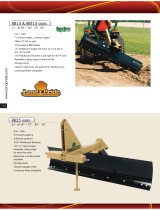 Land Pride Rear Blades RB 15 Product information
Land Pride Rear Blades RB 15 Product information
-
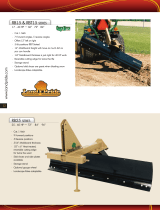 Land Pride RBT15 User manual
Land Pride RBT15 User manual
-
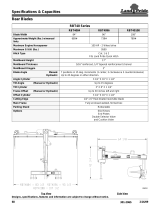 Land Pride RBT4096 User manual
Land Pride RBT4096 User manual
-
Land Pride RBT40 Series Quick start guide
-
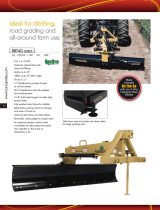 Land Pride RBT40 User manual
Land Pride RBT40 User manual
-
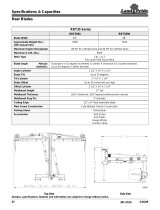 Land Pride RBT3596 User manual
Land Pride RBT3596 User manual
-
 Land Pride RB37 User manual
Land Pride RB37 User manual
-
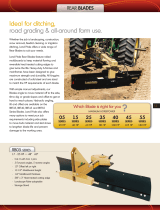 Land Pride RB05 Series User manual
Land Pride RB05 Series User manual
-
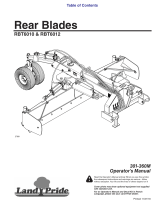 Land Pride RBT60 User manual
Land Pride RBT60 User manual
-
 Land Pride RBT45 Series User manual
Land Pride RBT45 Series User manual
Other documents
-
Brinly-Hardy PP-51BH User guide
-
Bercomac BBLST6 User manual
-
Toolots 8LR5IEJRF User manual
-
Agri-Fab 45-0357 Owner's manual
-
Worksaver MCR-7 User manual
-
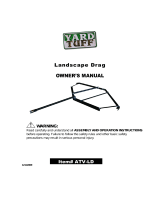 Yard Tuff YARD-ATV-LD Owner's manual
Yard Tuff YARD-ATV-LD Owner's manual
-
Worksaver PLR-48, PLR-60, PLR-72, PBX-42 User manual
-
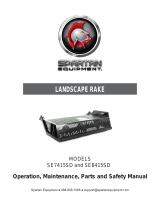 Spartan Equipment SE7415 Owner's manual
Spartan Equipment SE7415 Owner's manual
-
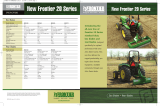 John Deere 20 User manual
John Deere 20 User manual
-
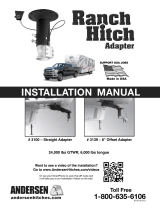 Andersen Hitches Ranch Hitch 3100 Installation guide
Andersen Hitches Ranch Hitch 3100 Installation guide






























